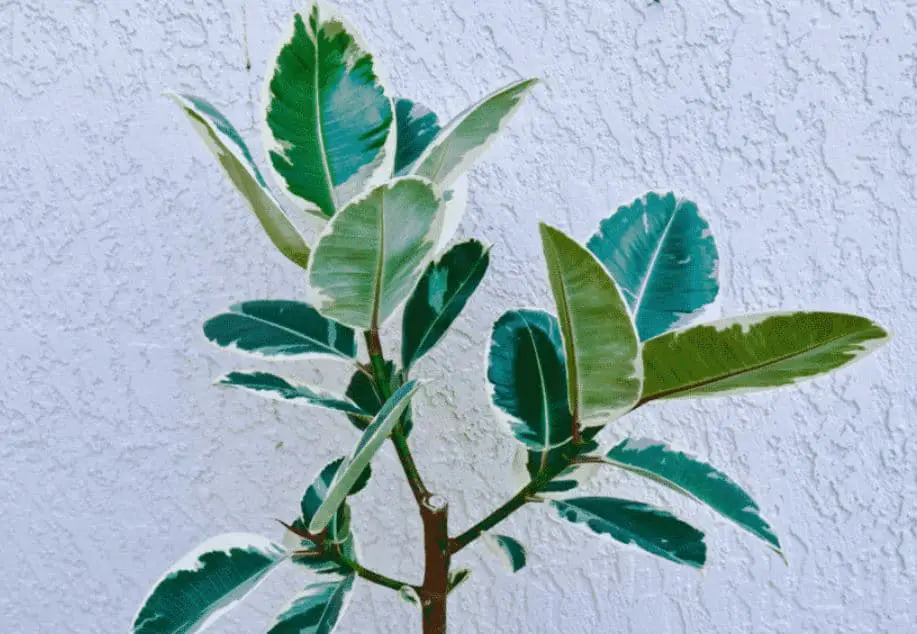Why will not the branch on my rubber tree? In garden chat rooms and houseplant swaps, this is a typical query. Ficus elastica, a rubber tree plant, may sometimes be fickle, growing upward and refusing to sprout side branches. Your rubber tree may not branch for a few reasons. See whether we can branch out your rubber tree this year by taking a peek.

A Rubber Tree’s Branching Needs Pruning
Breaking apical dominance is the most typical remedy for a rubber tree that will not branch. Simply put, this entails cutting off the top growth on the main stem to re-direct the hormone auxin downward, which will encourage branches to sprout further down the stem. While the plant is young, this should be done. The leafy upper canopy of older plants does not want to be disturbed.
When branching a rubber tree, make the cuts between March and October while the plant is actively growing. The most crucial amount is the top one. Take as much of the stem and leaves off as you like. The portions you remove may be planted over time to grow new plants.
Cut a scar, line where a leaf formerly was, or node of a leaf at the height of 1/4 inch (6 mm). Sharp pruners may be used to softly nick or slice the leaf scar to promote the growth of a new leaf.
How to Care for Rubber Trees to Make Branches
Moreover, or in conjunction with the cuttings, the soil may be revitalized with a composted mixture, watered, fed, and given the appropriate light.
Boost Soil: You may want to keep your large rubber tree from the container. After combining fresh potting soil with finished compost, aerate the area around the bottom with the fresh soil mixture. Work some new combinations into the soil around the roots without hurting them, if possible. Put more new dirt on top.
Lighting: Set the container in a spot that gets a lot of light, maybe even some morning sun. This plant may gradually adapt to a few hours of early light. If your plant was previously in a poorly lit location, adding illumination will immediately stimulate extra growth and branching, mainly after you have made the appropriate cuts.
Water: Seeing as cold water might shock the roots of the rubber tree plant, use lukewarm water instead. Wintertime requires less water, but the soil must be somewhat wet. The soil is too damp if the leaves are yellowing or falling. Wait until it has dry before adding water as growth picks up in the spring, water. Water well before fertilizing.
Feeding: To promote root growth, fertilize young plants with a high-phosphorus product. Feeding elder plants once a month with a nitrogen-based diet can encourage foliage to grow more completely as they produce new branches and leaves.
Use any or all of these suggestions to get your plant in shape this year now that you know how to branch rubber trees. Before the plant hibernates in the fall, new branches and leaves will emerge.


